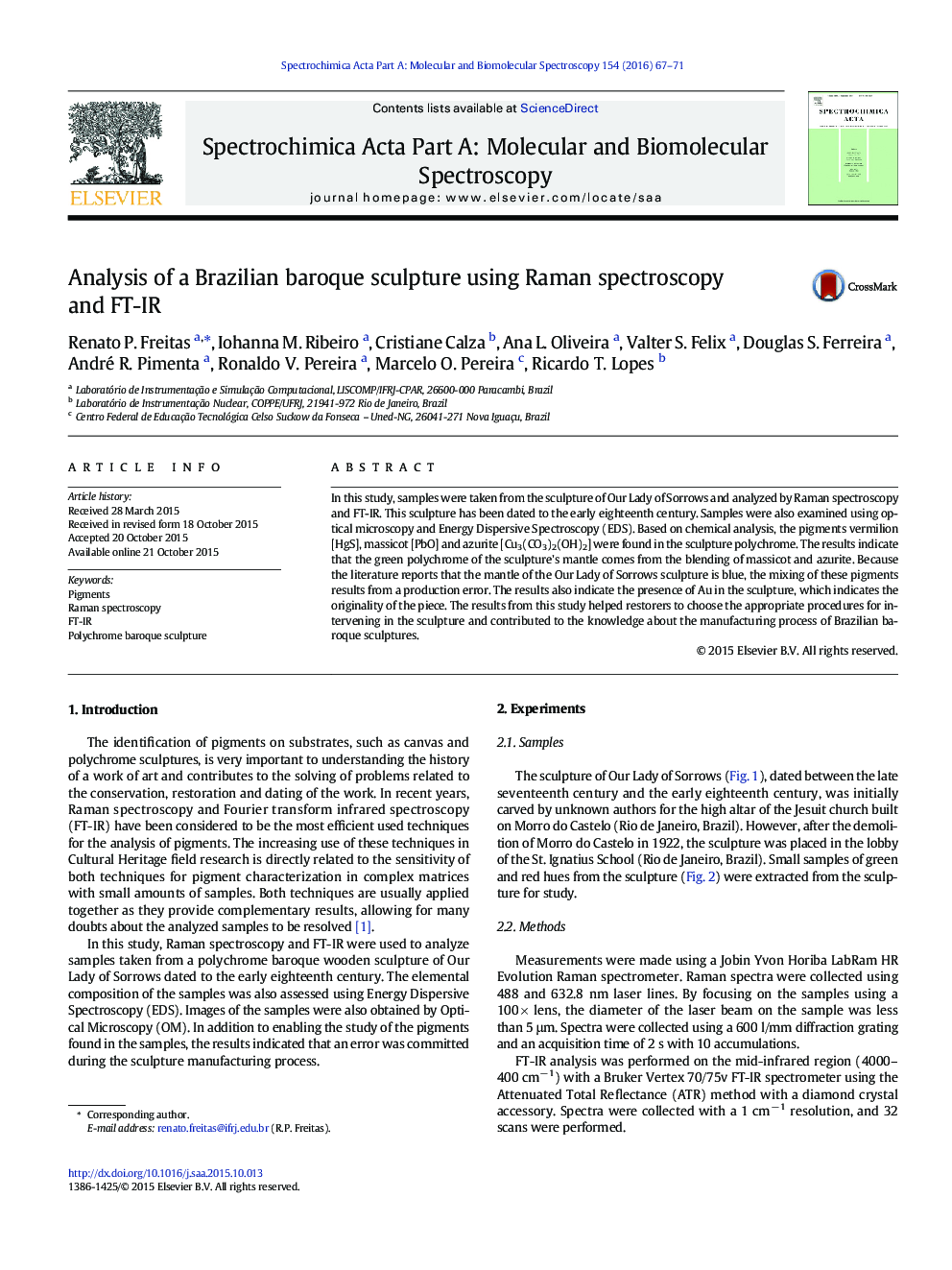| Article ID | Journal | Published Year | Pages | File Type |
|---|---|---|---|---|
| 1231775 | Spectrochimica Acta Part A: Molecular and Biomolecular Spectroscopy | 2016 | 5 Pages |
•Baroque sculpture.•Analysis of pigments by Raman.•Analysis of pigments by FT-IR.
In this study, samples were taken from the sculpture of Our Lady of Sorrows and analyzed by Raman spectroscopy and FT-IR. This sculpture has been dated to the early eighteenth century. Samples were also examined using optical microscopy and Energy Dispersive Spectroscopy (EDS). Based on chemical analysis, the pigments vermilion [HgS], massicot [PbO] and azurite [Cu3(CO3)2(OH)2] were found in the sculpture polychrome. The results indicate that the green polychrome of the sculpture's mantle comes from the blending of massicot and azurite. Because the literature reports that the mantle of the Our Lady of Sorrows sculpture is blue, the mixing of these pigments results from a production error. The results also indicate the presence of Au in the sculpture, which indicates the originality of the piece. The results from this study helped restorers to choose the appropriate procedures for intervening in the sculpture and contributed to the knowledge about the manufacturing process of Brazilian baroque sculptures.
Graphical abstractFigure optionsDownload full-size imageDownload as PowerPoint slide
